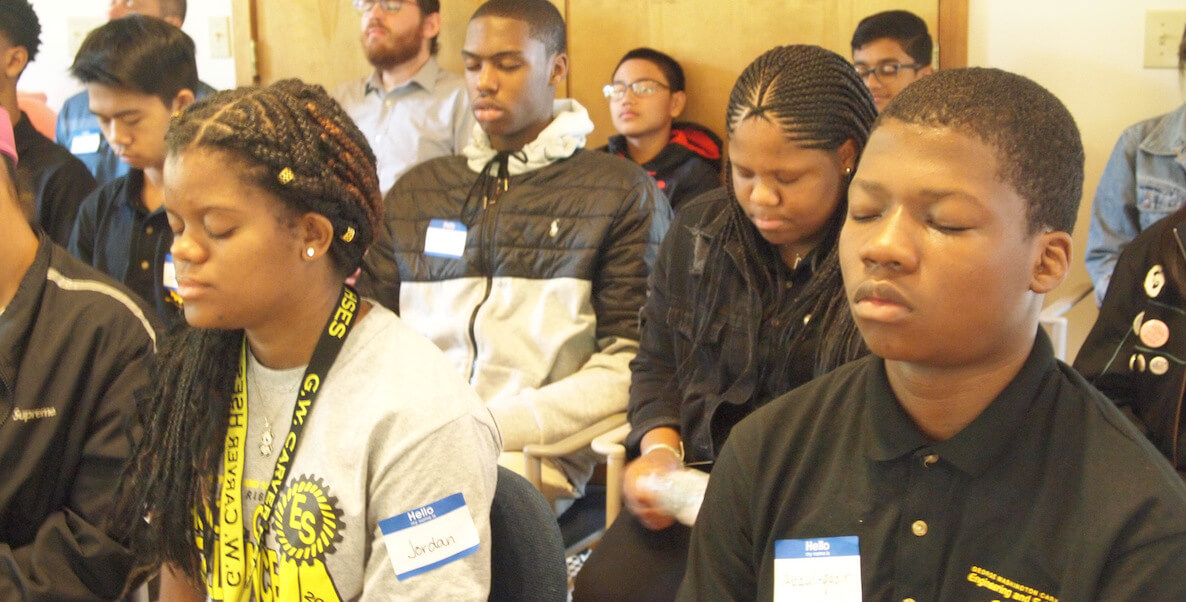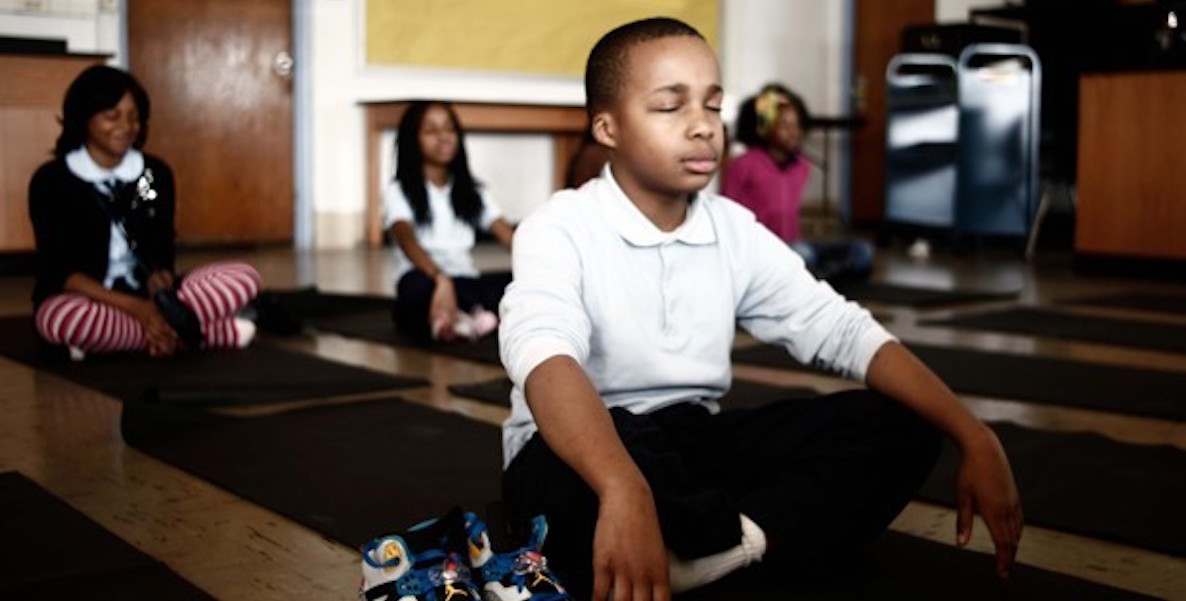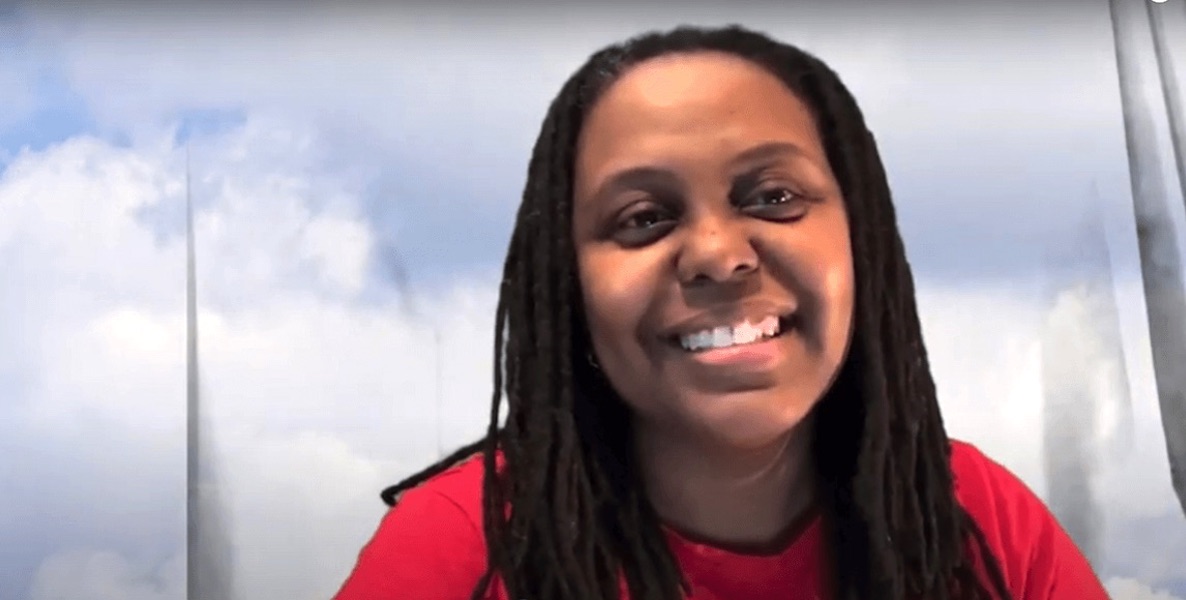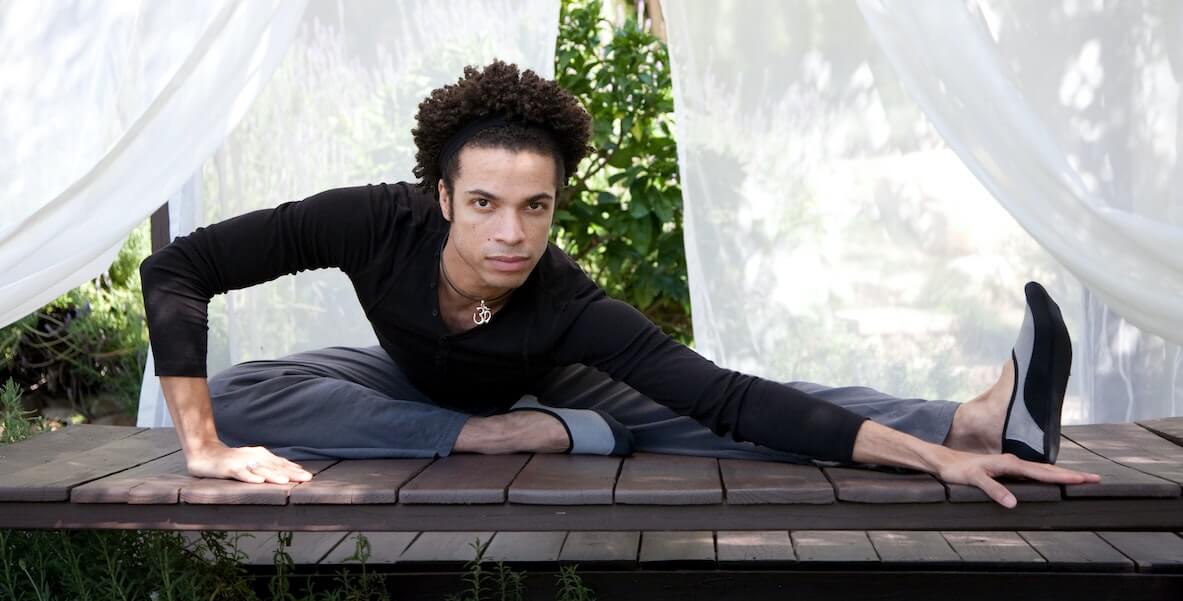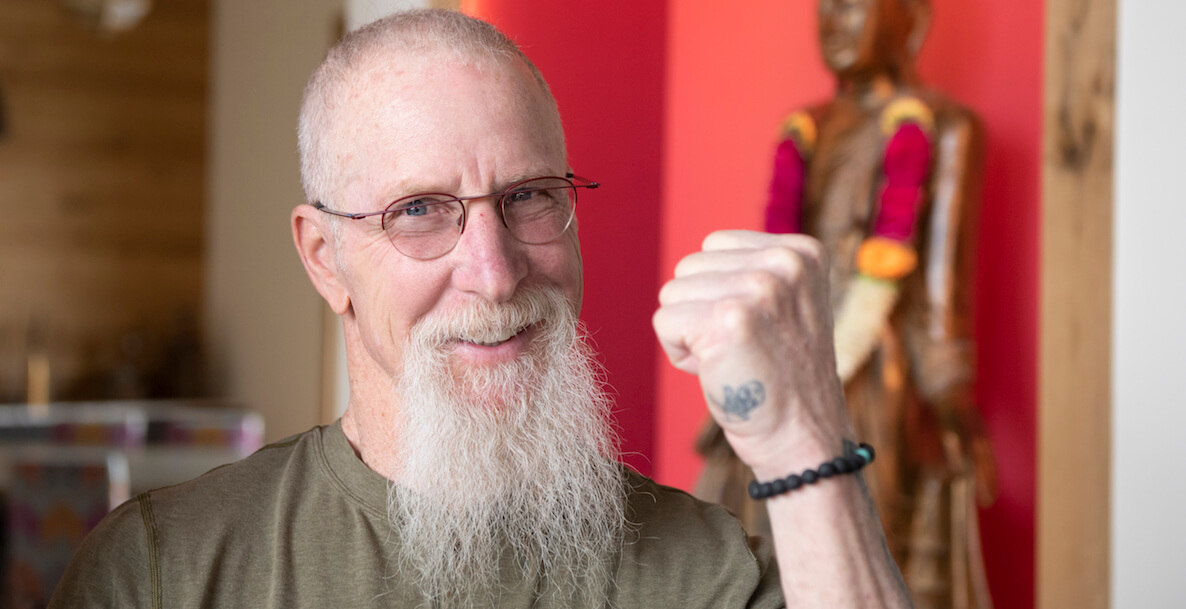When the American Cancer Society launches HEALED next week—the acronym stands for Health & Energy through Active Living Every Day—it will signify more than the announcement of “a community movement to educate and encourage people to live healthier lives in the present moment,” a melding of scientific data with spiritual practice for patients and their loved ones who are dealing with a cancer diagnosis.
It will also mark the return to the public stage of former Sixers owner, Philly cheerleader and apostle of optimism Pat Croce, the movement’s de facto founder and spokesman, already well on his way to raising $1.7 million for a calling that, he says, will “help to lessen the suffering of all who come within my reach.”
This reemergence comes after six years on a wild spiritual quest featuring intense philosophical study, endless hours of meditation and contemplation, and spiritual retreats in far-off locales including Bhutan, Thailand, Jerusalem, and Maui.
I’ve had a front row seat to this evolution of Pat Croce’s soul these last years. We’re good friends and longtime workout buddies; now, instead of calling me a “pussy” when I bail on that last rep, he kisses me on the cheek and tells me he loves me. Our workouts are a type of spiritual retreat in and of themselves. “Pain is inevitable,” he’ll say, quoting the Buddha. “Suffering is optional.”
To me, and to others in his eclectic flock, he’ll preach the wisdom of identifying the voice in your head that creates all your psychic suffering. “This self-talk, wandering mind, chatterbox, mental noise, or whatever you want to label the continuous, dysfunctional, thought-making machine in your head must be observed and capably controlled and not permitted to be the controller of your life,” he emailed me a few years ago. “Two similar sentiments about the mind come to mind. First, from the Indian sage, Osho, who said: ‘The mind is a beautiful servant, but a dangerous master.’ And the second from the enlightening Einstein, who stated: ‘The intuitive mind is a sacred gift and the rational mind is a faithful servant. However, we have created a society that honors the servant and has forgotten the gift.’”
So Croce, once an evangelist for transforming the body through workout, now heralds the power of now, and the slaying of ego that results when one is focused on the only one true thing: This. Very. Moment. He’d reached this awakened state before getting a cancer diagnosis of his own in recent months, T Cell Lymphoma.
“I don’t have cancer, my body has cancer,” he says now, calling the diagnosis a “gift of Grace, not a curse.” He calls his cancer a “Divine adventure” and it was his openness to flowing with it that led him to reach out to the American Cancer Society to try and make a difference for others who might not yet have, as he puts it, had their “minds cracked open.”
“Do they know what they’re getting themselves into?” Comcast Chairman and CEO Brian Roberts said of the American Cancer Society when Croce called to tell his friend of this latest mission.
Roberts was referring, of course, to Croce’s trademark hard-driving ways, his force of will, his passion. And that is all still there, but leavened now with a sense of wisdom and gentleness and grace. When Philadelphia first met Croce nearly 40 years ago, he was intent on whipping our bodies into shape. With the Sixers, he turned around a team and a city’s belief in itself. And now he’s out to rescue our souls. Get ready. There might not be a more interesting or inspiring third act on our public stage.
“Horatio Alger-by way-of Delco”
If you were around Philly in the ‘90s and early aughts, there was one dude you couldn’t escape. He was everywhere, and he infected the region with a very un-Philly like can-do optimism. Pat Croce was a Delco hell-raiser who, as a student, was once invited to leave West Chester University after beating the hell out of his dorm’s RA.
He made his appearance on Philly’s radar as the high-energy, carnival-barking physical trainer for the Flyers and Sixers; long before anyone had ever heard the phrase “physical therapist,” he’d anticipated the oncoming weekend warrior fitness craze and parlayed his position as trainer to the athletic stars into some 40 physical fitness rehab centers. In the bushes outside his Main Line rehab facility, star athletes like Mike Schmidt, Julius Erving and Charles Barkley dry-heaved after their workouts. Soon, T-shirts started appearing: I Survived Pat Croce.
Pat Croce’s story is proof that letting go—of thought, of angst, of the past, of ambition, of the “movie of me”—can actually be liberating.
Croce’s Horatio Alger-by way-of Delco story accelerated when he sold his rehab centers to Novacare for a reported $40 million in 1993. Within three years, he orchestrated the buying of the Sixers, becoming the team’s minority owner and club president.
It’s been two decades since he walked away from the 76ers, after taking a last place team to the NBA Finals in five short years. But Croce did more than that back then; through relentless positivism, he made a cynical city believe again. “It was never about basketball,” he once told me. “The real value proposition was changing the city from ‘can’t do’ to ‘can do.’”
Think of it: His team didn’t even win the championship, but it had more of an effect than those that did. The city loved that team, largely because of its two protagonists: Croce and his superstar, Allen Iverson, both undersized, both ferocious, both driven by passion, both etching into their skin their respective life philosophies: Croce’s pirate tattoo—“It means no rules, bro!”—the flip side to Iverson’s Edvard Munch-inspired “No Fear” ink. The team was built in their shared image: a relentlessly resilient underdog from the wrong side of the tracks.
Croce was everywhere back then, rappelling the Walt Whitman Bridge, shouting his slogan “I feel great!” from the arena rooftop, hugging Iverson at center court, greeting customers at the door on game nights, welcoming them to what he saw as their house. Each game, he’d select a different staffer—maintenance man, usher, concessionaire—and escort them to their front-row seats for the night, on him. When former president Bill Clinton wanted a seat in Croce’s box for the 2001 NBA Finals, Croce said no. He’d promised the space to the guys who were with him on his rags-to-riches journey, guys from the streets with names like Meat and T-Bone and Mutzie. Suddenly, a high-profile professional sports team had heart.
When it ended, after a public falling-out with the late Ed Snider, he jumped from adventure to adventure: There was a foray into self-help motivation–a bestselling business memoir, a nationally syndicated life-coaching TV show, Pat Croce Moving In— and a lineup of bars and restaurants in Key West, Florida, including the legendary Green Parrot dive bar, a live music venue whose slogan is “A Sunny Place for Shady People.” Of course Pat Croce would own an iconic honky-tonk.
Ever fascinated by the marauding ways of pirates, Croce not only opened the nation’s preeminent pirate museum in Saint Augustine, Florida, he made international headlines in 2011 when he discovered Sir Francis Drake’s shipwrecks off the coast of Panama, solving a 400-year mystery. He called Drake “a badass pirate, bro. I love this guy.”
But as he was turning 60, Croce welcomed his team to Key West for their annual manager’s meeting, and a thought intruded: “How’d I get here?” he wondered. “What am I doing here?”
Like the pirates he idolizes, he’d always been a man of action, too busy achieving and building and growing to ask the big picture questions of himself. Who had time for introspection? As his managers made their reports to him, he realized: I have 500 employees in the hospitality industry. What am I doing? I’m not Danny Meyer. This isn’t me.
“Sitting there, I realized that, when I was in the PT business, if I could help you get rid of that back pain, that meant something to me,” he told me then. “The last Sixers win? Making the city believe in something again? That meant something to me. But I’m not interested in the last great hamburger you had. I love leading a team, but there I was, about to turn 60, feeling like I wasn’t taking action on my passion.”
Something else was at play. When a friend suggested that one’s sixties are often the last truly healthy decade available to most men, that the wear and tear of Croce’s rabid physical fitness regimen might inevitably lead to physical decay in his seventies, his response was telling.
“If I make it to my seventies,” he blurted out. “I don’t think any Croce man has ever made it past 65.”
His saintly wife, Diane, who Croce calls his guru, had always asked him, “What are you chasing?”; I remember half-jokingly accusing him of suffering from “challenge deficit disorder.” Around the same time as his self-interrogation during his team-wide meeting in Key West, Croce read an article on the concept of stillness by Pico Iyer, author of The Art of Stillness: Adventures in Going Nowhere.
He’d always been a ball of coiled energy. He’d never known stillness. For the first time, he considered what to him seemed like a very odd idea: just doing nothing. Iyer posited that, through memory, imagination, speculation, and interpretation, life is really just a collection of thoughts, which meant that you could change your life by changing your thinking. Croce had spent decades transforming bodies. Could he do the same for his mind and, ultimately, his spirit? Soon, he’d sell his mansion on the Main Line. He’d get rid of the Bentley: “Who the fuck am I trying to impress?” he asked.
“This self-talk, wandering mind, chatterbox, mental noise, or whatever you want to label the continuous, dysfunctional, thought-making machine in your head must be observed and capably controlled and not permitted to be the controller of your life,” he emailed me a few years ago.
In November of 2015, Croce threw himself a wild 60th birthday bash at the Green Parrot; I was among a parade of Philadelphians who attended. We saw Croce leap up onto the bar, so moved by the thumping backbeat of the band, a couple of dark sunglass and black suit-wearing dudes playing “Soul Man,” doing Ackroyd and Belushi better than Ackroyd and Belushi. To see Croce dancing is to take in the loosest, most-comfortable in his own skin white guy you’ve ever seen, limbs flying every which way, mouth open and roaring skyward, his followers and friends below him reaching upward like it was Springsteen up there…and, in a way it was: He was their working class hero, a rebel by nature who has taken them all—some from Delco, some from board rooms, some from motorcycle gangs—with him on his most improbable rides.
Now here he was, stomping on the bar, getting the crowd, his crowd, worked into a hot, sweaty, frenzy, until his cousin—a high-ranking FBI official who by day stares down mobsters and international cyber-terrorists—noticed that a whirring ceiling fan was whizzing dangerously near Croce’s bobbing and weaving close-cropped head. “That’s not good,” the G-man muttered before reaching up to grab the gyrating pirate—who seemed to think at first that this was part of a new dance move instead of an attempt to save him from a birthday beheading.
Without a pause, Diane welcomed a troupe of Key West drag queens—Diana Ross, Tina Turner, and, of course, Marilyn—to serenade and gyrate against her husband. Now, in retrospect, it’s easy to see what all that partying was really about. Pat Croce was saying goodbye to his old life. In short order, the ultimate Type-A achiever turned his empire over to his son and son-in-law and walked away without a plan. Other than to explore. At 60 years old, Pat Croce would start a search for his soul.
The “Philosopher Prince”
In an ancient monastery high in the mountains of Bhutan, Pat and Diane Croce spent three weeks in retreat with Rinpoche Matthieu Ricard, the Buddhist monk and French translator for the Dalai Lama who, after neuroscientists spent 12 years studying the effects of meditation on his brain, is commonly referred to as “the happiest man alive.” Croce emailed me this journal entry from there:
The voice in the head has you thinking about living life, not really living life, and certainly not being life. I like the spiritual teacher Ram Dass’ description: “You’re always one thought away from where the action is.”
It’s vital to realize that Life is only now. The Source of Life is now. The grace of God can only be channelled through you now. How can you be connected to the Source of all intelligence, creativity, healing and harmony when you’re not now? Unfortunately, the voice in the head rarely exists in the vertical dimension of now. It thrives in the horizontal time dimension of past and future, a delusional existence. Think about it—there is no past and future. Show it to me. You can’t. No one has ever experienced a past or a future. Try it. The past was never not now, and the future will never not be now. And until you become consciously present and merge with ‘what is’ in the present moment, rather than with the thoughts in your head, you’ll never experience the ultimate peace and joy you are unconsciously seeking.
It was Aristotle who said: “It is the mark of an educated man to be able to entertain a thought without accepting it”…
Speaking of Zazen [meditation], recognizing the voice in your head is best accomplished when you’re just sitting silently in meditation without any external distractions or emotional triggers. Just sitting. No doing anything. No thinking of anything. No judging or criticizing anything. Just resting in the space of thoughtless awareness prior to any doing, thinking, or judging. No goal regarding anything. In fact, the goal of meditation is: there is no goal. Just sit and be present via your senses to ‘what is’ happening in the present moment. Just be one with your breath. Or just rest in your aware Presence of ‘I am’. It’s a designated quiet period of time that allows you to both relinquish any doing and the deep realization of your true being. To just be. Sitting with the true you—not the you who the mind portrays as you. You can sit and observe and verify the voice in the head is the voice of the idea you have of who you think you are, the illusory identity, and not the authentic silent voice of your pure Aware Being.
The great singer/songwriter Leonard Cohen wrote “there is a crack in everything/That’s how the light gets in,” and this journal entry is just one real-time example of what Croce refers to as his own head-cracking. When he first started on the path, you could count me as a skeptic. Croce had spent much of his adult life mastering challenges: Martial arts, flying helicopters, motorcycle riding (a passion that once nearly resulted in a leg amputation.) More recently, he’d become an expert woodworker and furniture maker and even taught himself kanji—the complex system of Japanese writing. This was just another pursuit, right? He was going to take up and master spirituality the same way he’d pursued other passions for decades.
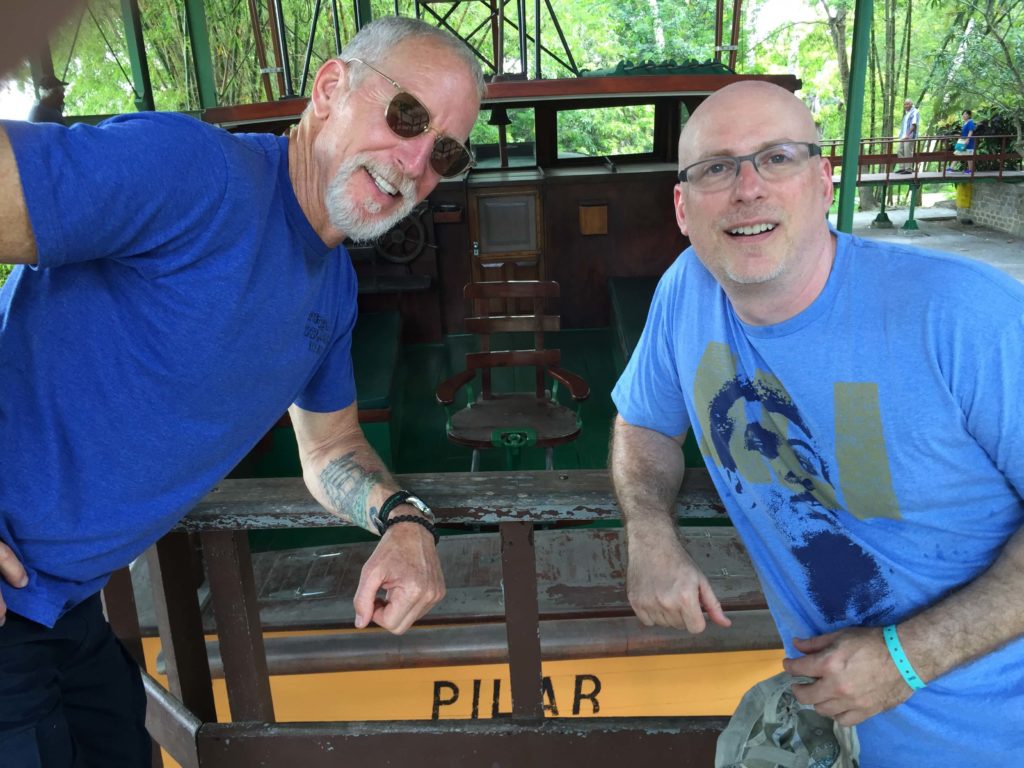
But something is different this time. You can see it in the way our workouts have changed. At 66, he still has his saving grace—an enduring boyishness. Permit me one anecdote: He’s a stickler for promptness. (In his businesses, if you didn’t show up for a meeting five minutes early, you’d be locked out.) One morning at the gym, he barked that I was late. Couldn’t be. He pointed to the clock: 6:05. How was that possible? He killed me, punishing me for my tardiness, at one point holding 35-pound barbells over my torso as I did crunches, threatening to drop them on me if I quit. Afterwards, as I slumped over with the dry-heaves, he started laughing to himself.
“What’s so funny?” I gasped.
“Oh, I got here early and pushed the clock ahead 10 minutes,” he said.
Back then, we’d talk about the Sixers between reps, or whatever lunacy happened to be in the news. In other words: We wouldn’t talk about anything, not really.
Now, I’ll share with him my flirtations with the writings of Pierre Teilhard de Chardin, a 20th Century French priest who was effectively excommunicated for advancing the radical notion that we’re here on earth to finish the work of Creation, a lovely prescription for those of us who believe in the transformative power of a shared civic life. Or I’ll proffer the truisms of the great Stoic Marcus Aurelius: “The more we value things outside our control, the less control we have.”
And Croce will quote lines already committed to memory from the latest Sufi mystic he’s studied at 4 am, usually something about how what we think of existence is all illusion, an egoic construct. Like any good brain teaser, it’s enough to give me a headache, and it puts me in mind of the old Woody Allen line: “I got kicked out of college for cheating on my metaphysics final exam. I looked into the soul of the boy sitting next to me.”
“The last Sixers win? Making the city believe in something again? That meant something to me. But I’m not interested in the last great hamburger you had. I love leading a team, but there I was, about to turn 60, feeling like I wasn’t taking action on my passion,” Croce says.
The point is, here’s Pat Croce, our least likely philosopher prince, and he’s doing the work. He’s made himself into a dispassionate, even bemused, viewer of that “movie of me” that plays inside all our heads; the result is an ever introspective and compassionate presence. Leading up to the announcement of HEALED, for example, Croce found himself in a low mood. He called it a “cloud of funk.” In an email to all the members of his Sunday morning sangha, a Zoom assembly of like-minded seekers, he modeled the type of self-interrogation I, for one, still aspire to:
I meditated and contemplated on exactly WTF happened? I rested in not-Knowing and recognized that for the first time in a long time I was fully pulled into the realm of form. I had left my peaceful base at the hub of the wheel and got lost in the frenzied activity of the revolving wheel. I had jumped in with both feet, forgetting to keep one foot planted in Stillness. From Meditation Hill, I slipped back fully into the realm of form and got habitually attached to all of its fascinating forms – goals and objectives, to-do lists, checking off action items, meetings, schedules, preparations, dozens of personalized email pitches, re-pitches to new email addresses, phone calls, follow-up phone calls, unanswered phone calls. I used the phone more in that week than I did the entire year of 2020. Rejections, excuses, blow-offs. Even though I started out in the Divine Flow as the ‘hole in the flute’ (Hafiz) and ‘acted without expectations’ (Lao Tzu), I unconsciously got caught up in expecting certain answers or not expecting certain feedback – both the result of a separate self (a personal, limited Awareness PC) attached to outcomes. I was not comfortable asking for money, but the good cause of ACS HEALED camouflaged the ‘I’ that I know I am with the ‘I’ that I thought I was. The ego, SOB, snuck in the back door. How much did we raise to-date? I can do better. I can do more. What’s next? I thought I got rid of that phrase 6 years ago. What’s next? It appeared that the movie of me was playing again at a theatre near you.
Vision is a mystical thing. Some folks have a sixth sense for divining cultural moments. In the ‘80s, Pat Croce saw that boomers working out were going to start pulling muscles—and someone would have to fix them. In the ‘90s and early aughts, he saw a city that needed a win, and that such a win could make that city believe in itself again.
And now he comes to us one more time. With HEALED, he’ll be serving cancer patients, as well as their caretakers and loved ones, with weekly Zoom gatherings and a curriculum centered around physical, mental and spiritual health. But even more than that, I think Croce’s reemergence is about something deeper.
Our spirit is broken. The country is divided and angry and scared. We’re all looking for some kind of meaning. For purpose. This can’t be all there is, right? And here, right on cue, comes the guru of Delco, after six years of meditation and study, modeling a way forward for us once again.
We all need to look inward, to check ourselves, to hold up the voices in our heads to inspection, to get out of our own damn way. To put away our need to be right, and instead just be. He’s the first to concede there’s nothing new in what he’s selling; it was 2,500 years ago, he’ll tell you, that Lao Tzu said, “The world is won by those who let go.”
Pat Croce’s story is proof that letting go—of thought, of angst, of the past, of ambition, of the “movie of me”—can actually be liberating. He’s back, he’s still a badass, and he’s Zen as fuck.



